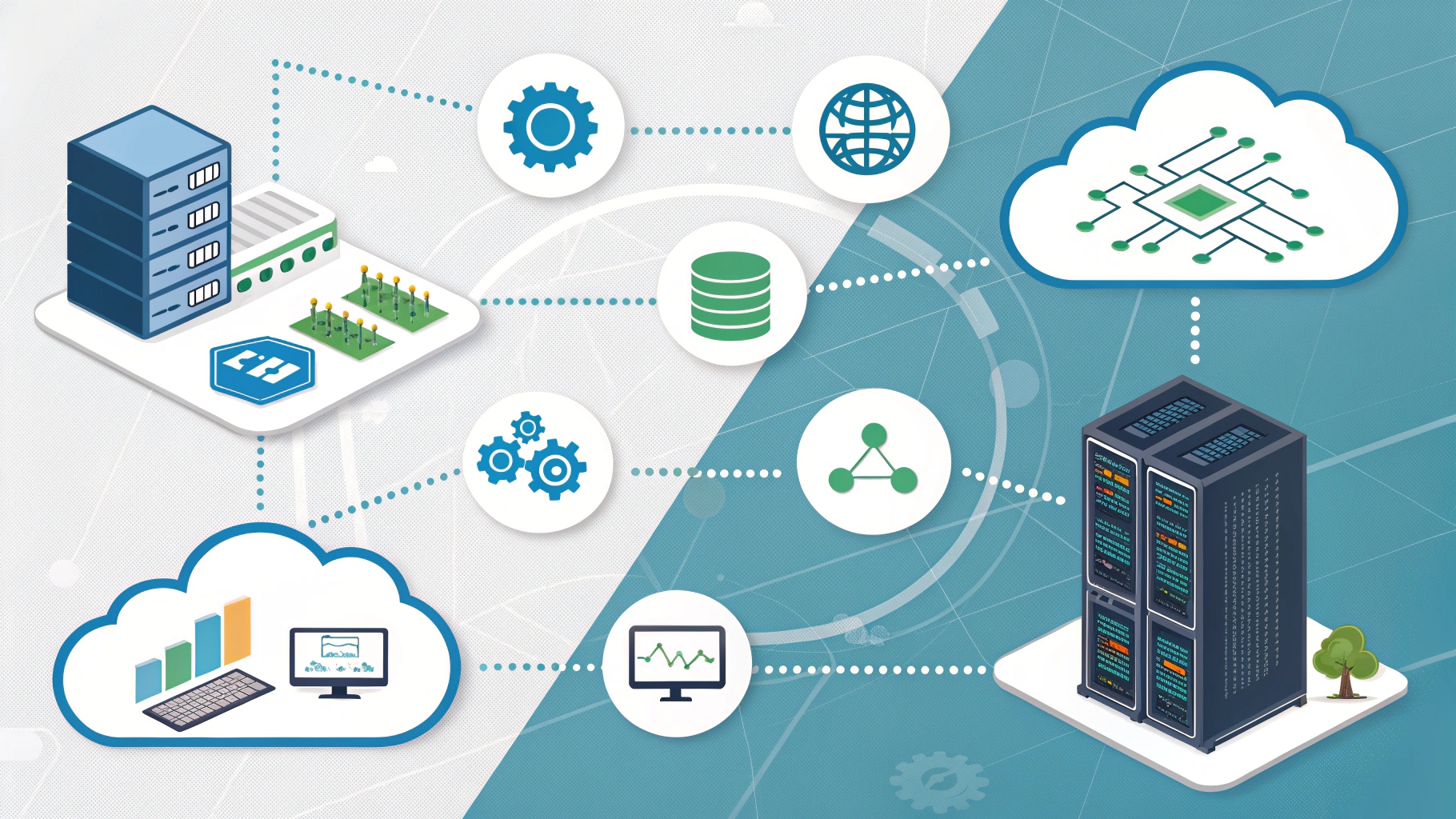
Summary
Edge AI is the combination of artificial intelligence and edge computing, enabling data to be processed locally on devices like smartphones, sensors, or IoT gadgets—without relying entirely on cloud servers. This local processing allows for real-time decision-making, reduced latency, lower bandwidth usage, and enhanced data privacy.
The blog explores the growing importance of edge computing AI across industries such as healthcare, autonomous vehicles, and manufacturing, highlighting how Edge AI enables scalable, responsive, and secure solutions. With rapid advancements in 5G, custom AI chips, and federated learning, Edge AI is becoming a crucial part of modern technology infrastructure.
In today’s hyper-connected world, the demand for faster data processing, low-latency response times, and smarter decision-making is higher than ever. Enter Edge AI, a game-changing innovation that brings artificial intelligence directly to edge devices—without relying on centralized cloud systems. In this guide, we’ll break down Edge AI explained in simple terms, explore its importance, and reveal how it’s shaping the future of real-time data processing.
What is Edge AI?
Edge AI refers to the deployment of artificial intelligence algorithms on hardware devices that are located physically close to the data source—this could be sensors, smartphones, cameras, or IoT devices. Instead of sending data to the cloud for processing, Edge AI enables devices to analyze and act on data locally, in real time.
Think of it as bringing brains to the device itself, allowing it to “think” on the spot.
Edge AI vs Traditional Cloud-Based AI
To understand the importance of Edge AI, let’s compare it with traditional cloud-based AI:
| Feature | Cloud-Based AI | Edge AI |
| Latency | High (due to data transmission) | Low (real-time processing) |
| Internet Dependency | Constant connection required | Works offline or with intermittent connectivity |
| Data Privacy | Higher risk due to centralized storage | Improved privacy (local processing) |
| Speed of Insights | Slower | Instant |
With edge computing AI, the main benefit is speed and reliability, especially critical in sectors like healthcare, automotive, and manufacturing where decisions must be made instantly.
Why Edge AI Matters More Than Ever
Real-Time Processing Capabilities
Edge AI allows data to be processed on-site, drastically reducing delays. This real-time response is essential in self-driving cars, smart surveillance systems, and industrial automation.
Reduced Bandwidth Usage
Since data doesn’t always have to be sent to the cloud, companies save on bandwidth and cloud storage costs. Only critical data is sent to centralized systems for further analysis.
Enhanced Data Privacy
With growing concerns over data privacy, Edge AI keeps sensitive data local. This minimizes exposure to cyber threats and makes it easier to comply with regulations like GDPR.
Lower Latency = Better User Experience
Whether it’s in gaming, virtual assistants, or wearable tech, Edge AI enhances the user experience by eliminating lag and making apps and devices feel smarter and more responsive.
Scalability for IoT Ecosystems
In large-scale IoT deployments, such as smart cities or industrial environments, Edge AI reduces the load on central servers, making it easier to scale operations.
While Edge AI focuses on real-time processing at the edge of networks, another transformative technology—quantum computing—is pushing the boundaries of data computation itself. Although they solve different types of problems, both technologies are part of the future of computing. If you’re curious to understand how quantum computing works and why it’s making headlines, check out our Beginner’s Guide to Quantum Computing for a clear and easy-to-follow breakdown.
Real-World Applications of Edge AI
Let’s look at how edge computing AI is being used today:
Autonomous Vehicles
Self-driving cars use sensors and cameras to collect and process data in real time. With Edge AI, they can make split-second decisions without waiting for cloud approval.
Healthcare Devices
Wearables and remote monitoring tools analyze health data locally to detect anomalies like heart rate spikes or low oxygen levels instantly.
Smart Manufacturing
Edge-enabled robots and sensors detect faults, optimize workflows, and predict maintenance needs without interrupting operations.
Retail & Smart Surveillance
Cameras with built-in AI can analyze foot traffic, detect shoplifting, and provide real-time alerts—all without sending video feeds to a central server.
How Edge AI Works: A Quick Breakdown
Data Collection
Devices with sensors (like cameras or microphones) gather raw data.
On-Device Processing
AI algorithms run directly on the device or nearby gateway.
Local Decision Making
Based on the AI analysis, actions are taken instantly—like triggering an alarm or adjusting machine operations.
Cloud Syncing (Optional)
Processed insights or critical data can still be sent to the cloud for long-term storage or further analysis.
Want to see how Edge AI is being implemented at scale? Explore NVIDIA’s edge AI solutions to discover how industries like robotics, healthcare, and automotive are using real-time, on-device intelligence to transform their operations. From smart manufacturing to autonomous machines, NVIDIA offers cutting-edge hardware and software designed for performance at the edge.
Future Trends in Edge AI
As technology continues to evolve, expect the following trends in Edge AI:
Integration with 5G: Faster networks will enhance edge performance and make real-time AI even more effective.
Custom AI Chips: Specialized processors (like Google’s Edge TPU or Apple’s Neural Engine) are making edge devices smarter and more energy-efficient.
AI at the Nano-Level: Tiny devices, from pacemakers to hearing aids, will soon be running localized AI algorithms.
Federated Learning: This allows edge devices to train AI models collaboratively without sharing raw data, boosting both performance and privacy.
Final Thoughts
Edge AI is no longer a buzzword—it’s a foundational technology that’s enabling smarter, faster, and more secure decision-making across industries. Whether it’s powering real-time processing in autonomous cars or helping doctors monitor patients remotely, Edge AI is proving to be a must-have innovation in our increasingly connected world.
Understanding Edge AI explained clearly puts you ahead of the curve in this next wave of tech evolution. As demand for low-latency, intelligent applications grows, so too will the importance of AI at the edge.
Key Takeaways:
Edge AI = AI running on local devices instead of cloud servers
It offers real-time processing, improved privacy, and lower latency
Critical for industries needing instant decisions: healthcare, automotive, IoT
Future-ready tech: 5G, custom AI chips, federated learning will accelerate growth
FAQs: Edge AI Explained
1. What is Edge AI?
Edge AI refers to running artificial intelligence algorithms on devices at the “edge” of the network—closer to where data is created. This avoids the need to send data to the cloud, allowing for faster and more secure processing.
2. How is Edge AI different from cloud AI?
Cloud AI processes data in centralized servers, which can introduce delays. Edge AI, on the other hand, processes data locally, providing real-time responses, better privacy, and reduced internet dependency.
3. Why is Edge AI important?
Edge AI is important because it enables instant data processing, especially in critical applications like self-driving cars, medical monitoring, and industrial automation. It also helps companies save on bandwidth and enhances user privacy.
4. What are some real-world applications of Edge AI?
Some key applications include:
Autonomous vehicles (real-time decision making)
Healthcare wearables (on-device health monitoring)
Smart surveillance systems (real-time threat detection)
Industrial IoT (predictive maintenance and automation)
5. Is Edge AI secure?
Yes, Edge AI enhances security by keeping sensitive data local, reducing exposure to potential cyber threats. It also supports compliance with data privacy regulations like GDPR.
6. What industries benefit the most from Edge AI?
Industries that rely on real-time decision-making and high volumes of data—such as automotive, healthcare, manufacturing, energy, and smart cities—benefit greatly from Edge AI.
7. What’s the future of Edge AI?
The future of Edge AI looks promising with innovations in 5G, custom AI hardware, and federated learning, making devices smarter, faster, and more energy-efficient. Edge AI will be central to the next generation of intelligent applications.







